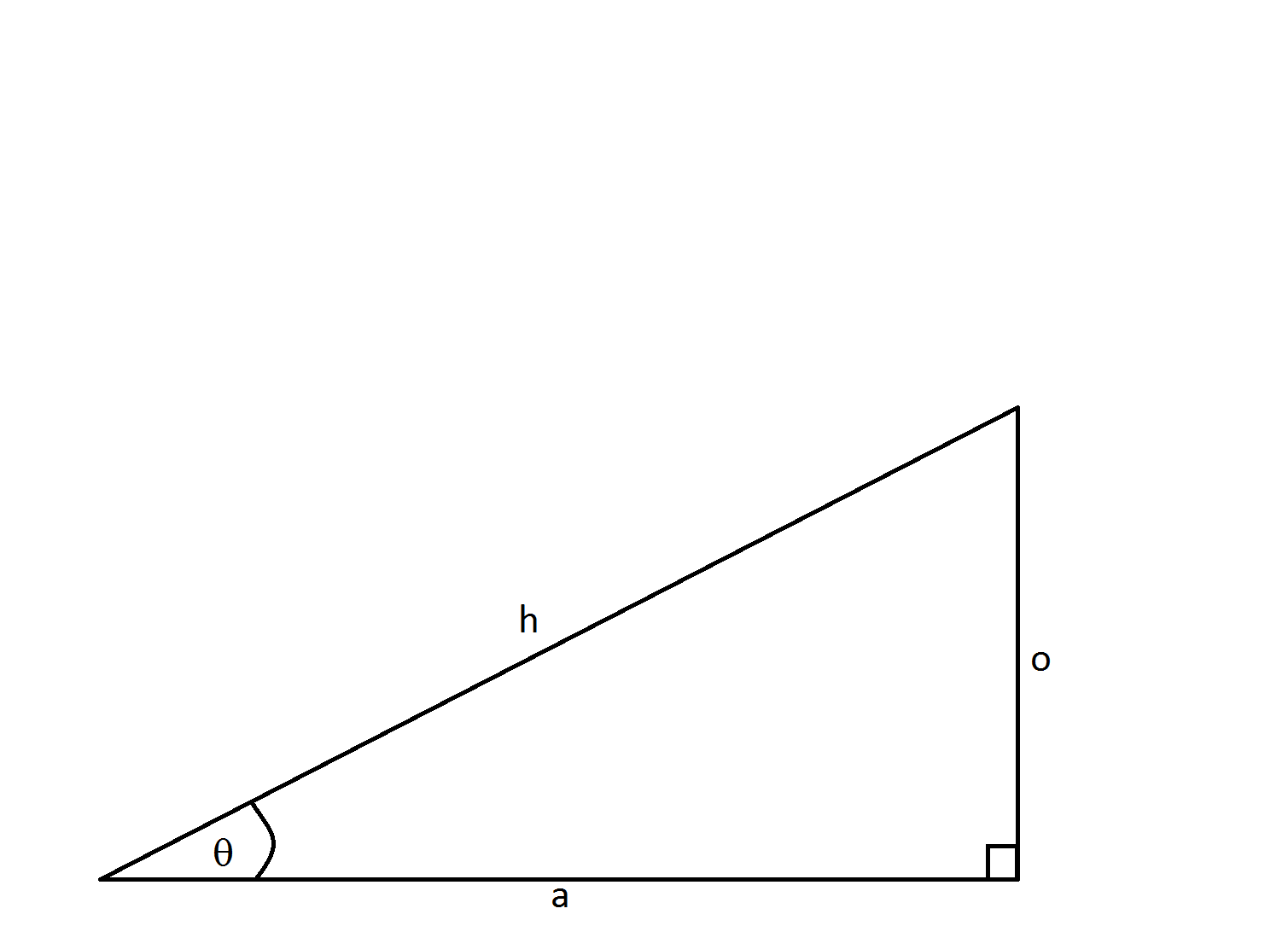All ACT Math Resources
Example Questions
Example Question #1 : How To Find The Height Of A Right Triangle
Given a right triangle with a leg length of 

1. Use the pythagorean theorem with 

2. Solve for 
(Notice that this right triangle is also a 
Example Question #2 : How To Find The Height Of A Right Triangle
A 

To answer this, we first need to understand that we are trying to find the leg of a right triangle. The ladder, when leaned against the wall, forms a right triangle where the ladder is the hypotenuse, the wall is one leg, and the ground between the ladder and the wall is the other leg.
To find how high up the ladder touches the wall, we use the Pythagorean Theorem, which is:




We then rearrange to solve for one of the legs by subtracting 
We can now plug in our values of 10 for the hypotenuse and one of our legs (in this case, 
We can then take the square root of this equation to get an answer for
The question asked us to approximate, so we must round to the nearest whole number. To do this, we round a number up one place if the last digit is a 5, 6, 7, 8, or 9, and we round it down if the last digit is a 1, 2, 3, or 4. Therefore:
Therefore, our answer is 
Example Question #3 : How To Find The Height Of A Right Triangle
Right triangle 


The formula for the area of a triangle is 








Example Question #81 : Plane Geometry
Find the height of a right triangle given a base of 

To solve, simply realize this is one of our special right triangles, 

Example Question #43 : Geometry

If 


Not enough information to solve
This problem is solved using the Pythagorean theorem 



Using the labels of our triangle we have:
Example Question #44 : Geometry
If one of the short sides of a 45-45-90 triangle equals 5, how long is the hypotenuse?
5
π
5√2
√15
√10
5√2
Using the Pythagorean theorem, x2 + y2 = h2. And since it is a 45-45-90 triangle the two short sides are equal. Therefore 52 + 52 = h2 . Multiplied out 25 + 25 = h2.
Therefore h2 = 50, so h = √50 = √2 * √25 or 5√2.
Example Question #1 : How To Find The Length Of The Hypotenuse Of A Right Triangle : Pythagorean Theorem
The height of a right circular cylinder is 10 inches and the diameter of its base is 6 inches. What is the distance from a point on the edge of the base to the center of the entire cylinder?
None of the other answers
√(43)/2
4π/5
√(34)
3π/4
√(34)
The best thing to do here is to draw diagram and draw the appropiate triangle for what is being asked. It does not matter where you place your point on the base because any point will produce the same result. We know that the center of the base of the cylinder is 3 inches away from the base (6/2). We also know that the center of the cylinder is 5 inches from the base of the cylinder (10/2). So we have a right triangle with a height of 5 inches and a base of 3 inches. So using the Pythagorean Theorem 32 + 52 = c2. 34 = c2, c = √(34).
Example Question #81 : Plane Geometry
A right triangle with sides A, B, C and respective angles a, b, c has the following measurements.
Side A = 3in. Side B = 4in. What is the length of side C?
9
7
25
6
5
5
The correct answer is 5. The pythagorean theorem states that a2 + b2 = c2. So in this case 32 + 42 = C2. So C2 = 25 and C = 5. This is also an example of the common 3-4-5 triangle.
Example Question #5 : How To Find The Length Of The Hypotenuse Of A Right Triangle : Pythagorean Theorem
The lengths of the three sides of a right triangle form a set of consecutive even integers when arranged from least to greatest. If the second largest side has a length of x, then which of the following equations could be used to solve for x?
(x – 1)2 + x2 = (x + 1)2
(x – 2)2 + x2 = (x + 2)2
(x – 2) + x = (x + 2)
x 2 + (x + 2)2 = (x + 4)2
(x + 2)2 + (x – 2)2 = x2
(x – 2)2 + x2 = (x + 2)2
We are told that the lengths form a series of consecutive even integers. Because even integers are two units apart, the side lengths must differ by two. In other words, the largest side length is two greater than the second largest, and the second largest length is two greater than the smallest length.
The second largest length is equal to x. The second largest length must thus be two less than the largest length. We could represent the largest length as x + 2.
Similarly, the second largest length is two larger than the smallest length, which we could thus represent as x – 2.
To summarize, the lengths of the triangle (in terms of x) are x – 2, x, and x + 2.
In order to solve for x, we can make use of the fact that the triangle is a right triangle. If we apply the Pythagorean Theorem, we can set up an equation that could be used to solve for x. The Pythagorean Theorem states that if a and b are the lengths of the legs of the triangle, and c is the length of the hypotenuse, then the following is true:
a2 + b2 = c2
In this particular case, the two legs of our triangle are x – 2 and x, since the legs are the two smallest sides; therefore, we can say that a = x – 2, and b = x. Lastly, we can say c = x + 2, since x + 2 is the length of the hypotenuse. Subsituting these values for a, b, and c into the Pythagorean Theorem yields the following:
(x – 2)2 + x2 = (x + 2)2
The answer is (x – 2)2 + x2 = (x + 2)2.
Example Question #41 : Right Triangles
What is the hypotenuse of a right triangle with sides 5 and 8?
8√13
5√4
12
15
√89
√89
Because this is a right triangle, we can use the Pythagorean Theorem which says a2 + b2 = c2, or the squares of the two sides of a right triangle must equal the square of the hypotenuse. Here we have a = 5 and b = 8.
a2 + b2 = c2
52 + 82 = c2
25 + 64 = c2
89 = c2
c = √89
Certified Tutor
Certified Tutor
All ACT Math Resources











































